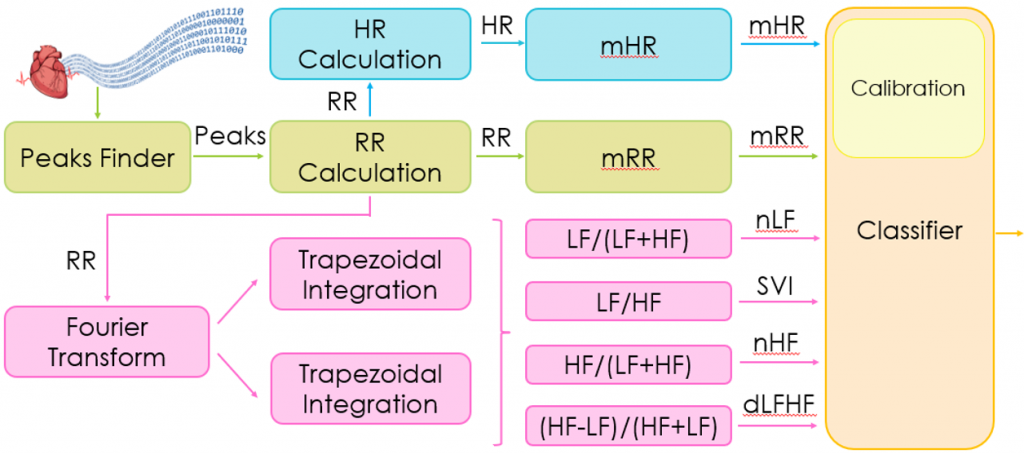Stress was first defined by Selye in 1936 as a general adaptation syndrome, caused by the perception of danger.
In recent decades, mainly in developed countries, the trend of stressed individuals is dramatically increasing, affecting more than 70% of Americans. It has negative effects on both health, and private life and working performance.
By Jessica Leoni,
PhD candidate in Data Analysis and Decision Science at mOve lab, Politecnico di Milano
Mindfulness techniques prove to be effective solutions in the management of stress and anxiety attacks, increasing the subject’s awareness of their psychophysical state.
Initially, these techniques were taught during outpatient sessions, where a series of sensors were applied to monitor the patient’s stress level. The recent refinement of the acquisition technology and Machine-Learning algorithms made it possible to perform this monitoring outside the hospital environment, through wearable sensors that communicate with devices such as smartphones.
However, these solutions require frequent subject-device interaction, making them incompatible with work or public speaking contexts, one of the most common sources of stress.
Therefore, at NECSTLab we are working on EMPhASIS, a system adaptable to the physiology of each subject, able to recognize and report real-time its perceived stress level. EMPhASIS is fully autonomous, and for acquisition and reporting uses sensors embedded in a wristband, whose autonomy is compatible with the working day duration.
To obtain a real-time and energy-efficient system, the entire framework has been implemented on a Xilinx PYNQ-Z1 board, leveraging both the ARM processor and the FPGA. As shown in the figure below, EMPhASIS provides an ECG signal acquisition phase, from which R peaks are isolated to extract features both in time and frequency domains. These are presented to a threshold-based algorithm that projects the observations in the PCA space and classifies them between normal and stress-related. The stress level estimation is reported to the subject by a vibrating sensor embedded in the wristband. At the first use, the user is monitored for 5 minutes both in quiet and stressful condition, to allow the system to calibrate itself to its physiology.

The project is ambitious, but its benefits are countless. Just think of contexts such as offices and schools, where the stress level could be reported not only to individual users but also to their supervisors so that they can meet their needs. In this vision, the choice of the FPGA is key, allowing for processing several subjects in parallel while keeping the overall processing time unchanged.

